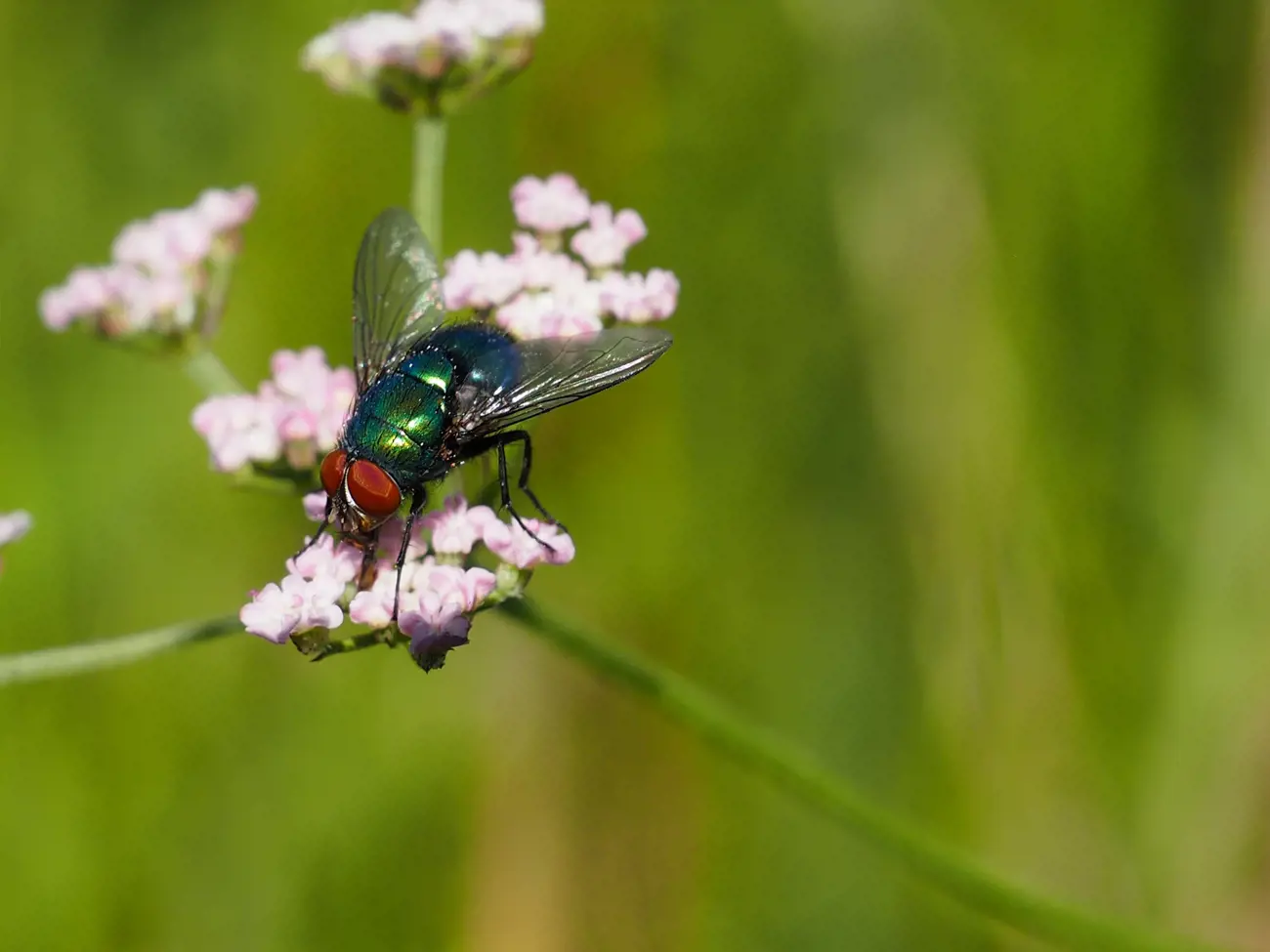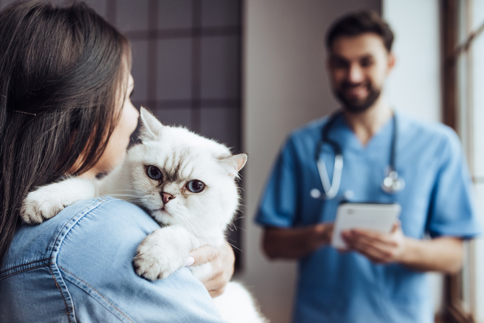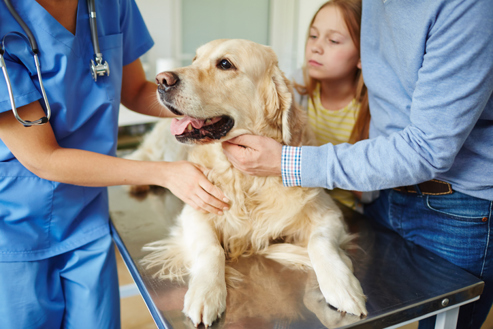What is flystrike in pets?
6th January, 2021

Owning a pet is a huge benefit to many people but also a big responsibility. As if pet lovers don’t have enough to worry about, there can be some very painful conditions out there that affect our furry friends.
While insurance for a pet is a great way to allay concerns, having the most accurate information on potential health issues is also key.
As animal lovers ourselves, we’ve looked at one of the more unpleasant conditions, that of flystrike. How our beloved cats and dogs can catch it, how to prevent it and how to treat it.
What is flystrike?
More usually associated with rabbits and guinea pigs, flystrike (also called myiasis) can also affect dogs and cats. Flystrike develops particularly in the warmer months when flies lay eggs on your animal’s fur.
These then hatch into maggots and begin to eat your pets’ flesh. At first the maggots will eat dead skin or debris but when that has run out, they then begin feeding on healthy skin.
As well as being painful this can quickly lead to infection, toxic shock and even death.

Which pets are most at risk?
Flies are particularly attracted to the moist and inflamed skin caused by wounds, infection sites and fur that has been soaked in faeces or urine. Therefore, pets with dirty rear ends or generally dirty fur are particularly at risk. Your pet might be at risk if:
-
They are unable to clean themselves properly. For example, an older animal suffering from arthritis might not be as flexible as they once were.
-
They are ill. Particularly if they’re producing abnormally smelly urine or have diarrhoea.
-
They are incontinent.
-
They are fed inappropriate diets. Feeding an animal unsuitable food can cause stomach upsets, which leads to dirtier rear ends.
-
They have an internal parasitic infection.
-
They have an open wound.
-
They live outdoors where fly infestations are more prevalent.
If your pet does become infected with flystrike then try not to feel guilty. After all, even clean, well-kept pets can get the condition. For example, cat and dog breeds with longer coats can be more susceptible to the condition.
Their fur can easily hide an infected wound and the maggots are much harder to spot. Kittens and puppies can also be at higher risk if they don’t have a mother to keep them spotless!
Signs of flystrike
Although visible maggots or larvae are the most obvious sign of flystrike in your cat or dog, they may not be the first thing you notice. Other signs that your dog or cat could be infected with flystrike include:
-
Red raised sores possibly filled with pus
-
Damp or matted fur
-
Painful, bloody or open wounds
-
Biting at the skin
-
Shaking of the head
-
Difficulty sleeping
-
Lethargy
-
Unwillingness to eat or drink
-
A foul smell from them or their bedding
Cats may also vocalize more than usual if they are feeling discomfort.
Although these are quite generalised signs, if you see your dog or cat behaving abnormally, always check them over for any evidence of flystrike or other conditions.
If they seem unwell, you may need a trip to the vet as soon as possible. And if you find maggots or larvae on their fur then do so as a matter of urgency.
Pet insurance policyholders with Purely Pets have exclusive access to a 24-Hour Vet Helpline to get advice and guidance for their pet-related worries. The helpline is provided by VetsDirect and all calls are handled by registered veterinary nurses who have a minimum of three years’ practical experience.

How to prevent flystrike
The most effective ways to prevent flystrike are through common-sense animal care. However, particularly during warmer weather it’s important to be vigilant and do the following.
-
Check for signs of illness, injury or behavioural changes every day.
-
Check around their rear end and tail area at least twice a day. If it’s dirty then clean and dry it thoroughly. It may be necessary to clip the fur in order to keep things clean.
-
Grooming is a good way to keep areas free of moisture and will let you see signs of flystrike before they develop further.
-
Wash bedding and clean toilet areas regularly.
-
Check your pet’s weight and diet is correct.
-
Repel flies or invest in fly traps.
-
Particularly if your pet has a skin infection, wounds or surgical incisions then bring them inside to keep them away from flies.
Quick treatment is the key to a full recovery after flystrike, so make sure you have pet insurance in place.
Treatment of flystrike
Treating fly strike can be a long process depending on your pet’s overall health. Initial treatment from your vet may well involve your pet being anesthetized in order to remove maggots, larvae and any dead skin painlessly.
Your pet’s fur will probably be clipped around the affected area and then any wounds cleaned thoroughly with an antiseptic or antibiotic solution.
Your pet could well be prescribed pain relief, antibiotics to help healing and prevent reinfection and even a corticosteroid to prevent inflammation. It’s important to follow your vet’s instructions as to medication and care for your pet on their return home.
Underlying conditions such as incontinence or arthritis that may have contributed to the flystrike will also need to be addressed. Having the right pet insurance in place means that your cat or dog can look forward to the care they deserve.
How insurance from Purely Pets can help
Unexpected costs such as vet bills can be a nasty surprise when taking care of your pet. Isn’t it easier to pay a regular premium than to have to find cash in an emergency?
If your four-legged friend develops a serious medical condition like flystrike, you’ll be thankful that Purely Pets is there to help cover the costs.
The caring team of insurance for pets specialists at Purely Pets are here to make this simple and transparent. Choosing award-winning cover from Purely Pets means you’ll benefit from:
-
15 levels of lifetime cover to choose from
-
Online claims
-
Knowledgeable team ready to help
-
Lifetime cover up to £15,000
Get a quote for pet insurance today.
Helpful Pages
Recent Posts
Pet Insurance Quote
- 98% claims paid *
- Claims paid directly to vets
- 24/7 vet video consultations
- Interest free monthly payments




